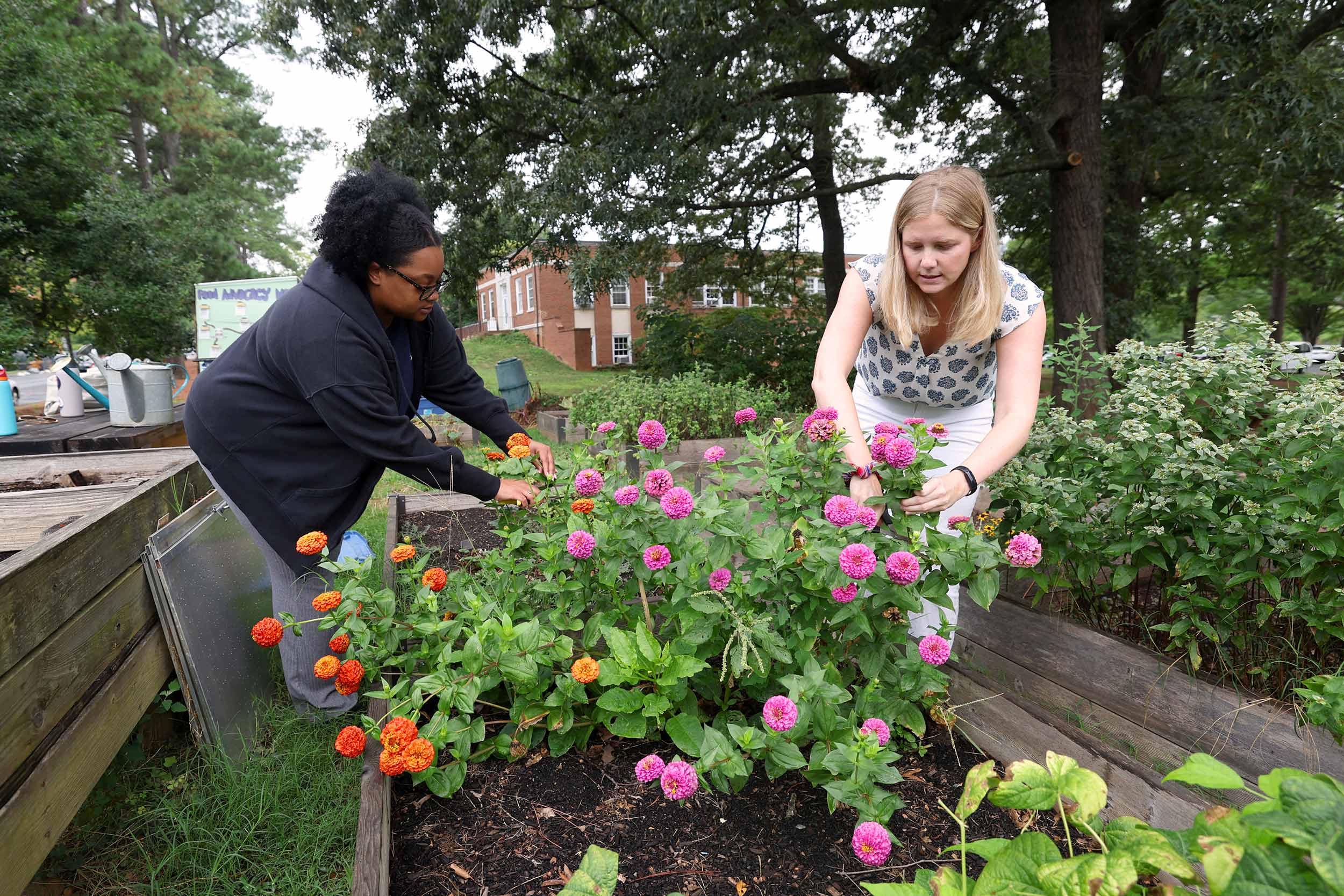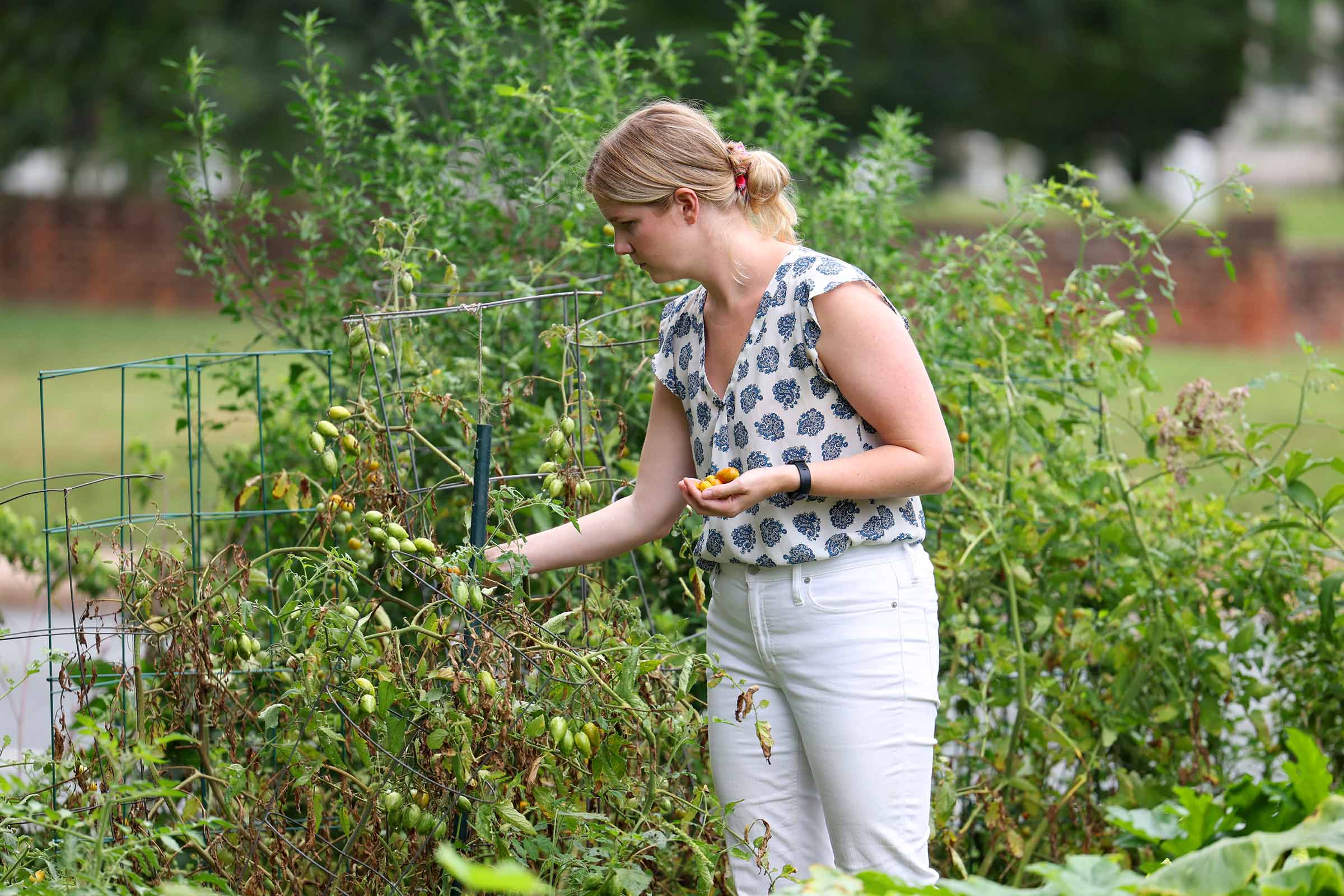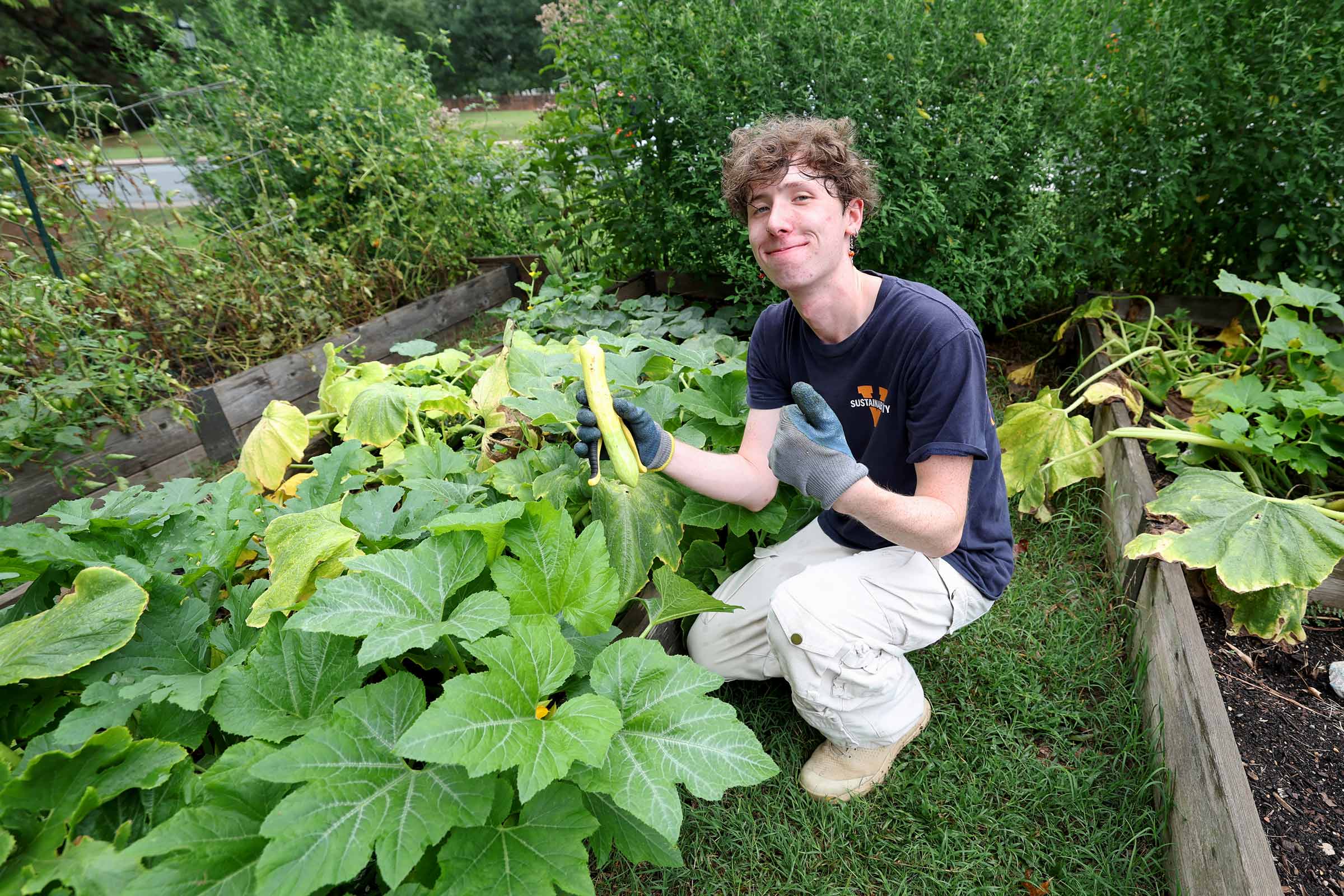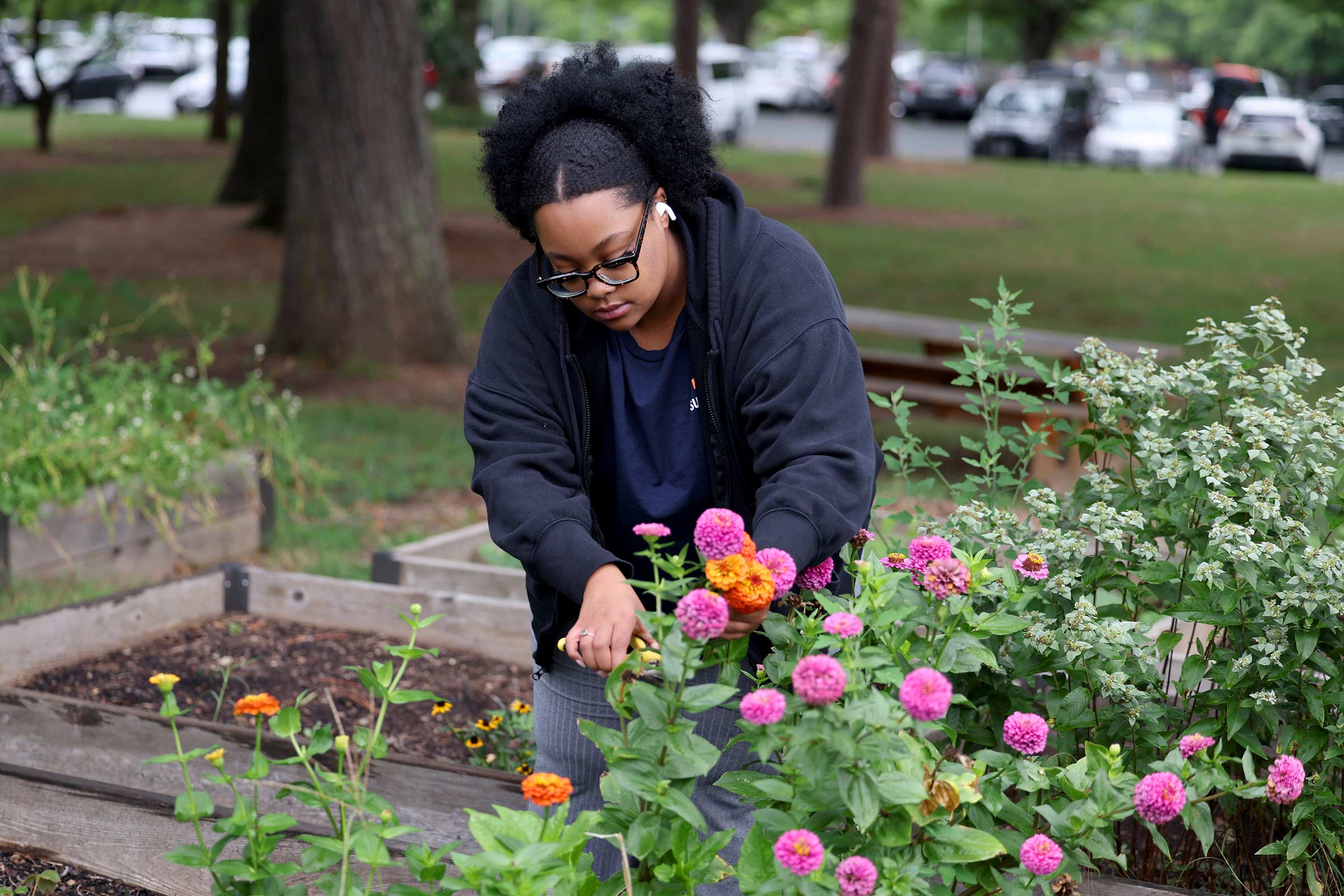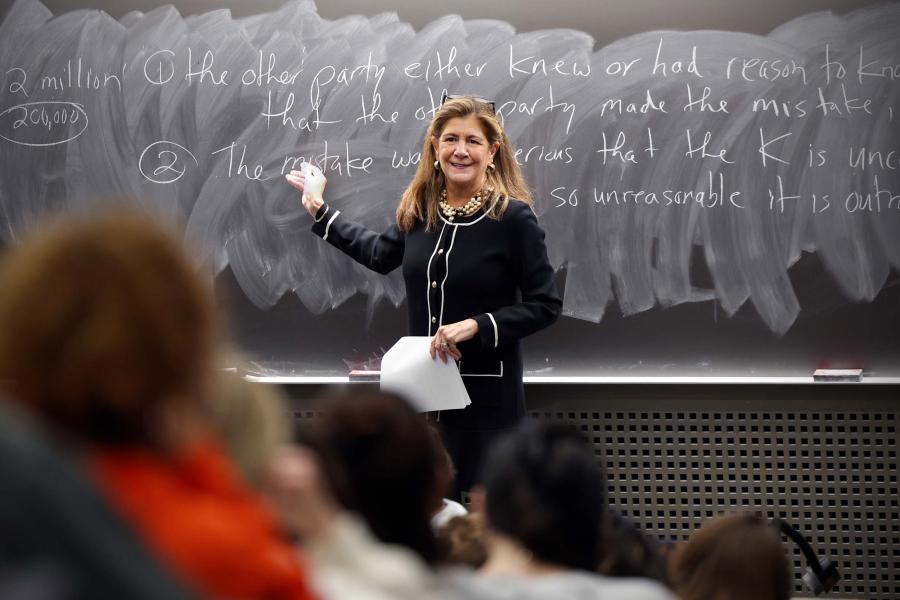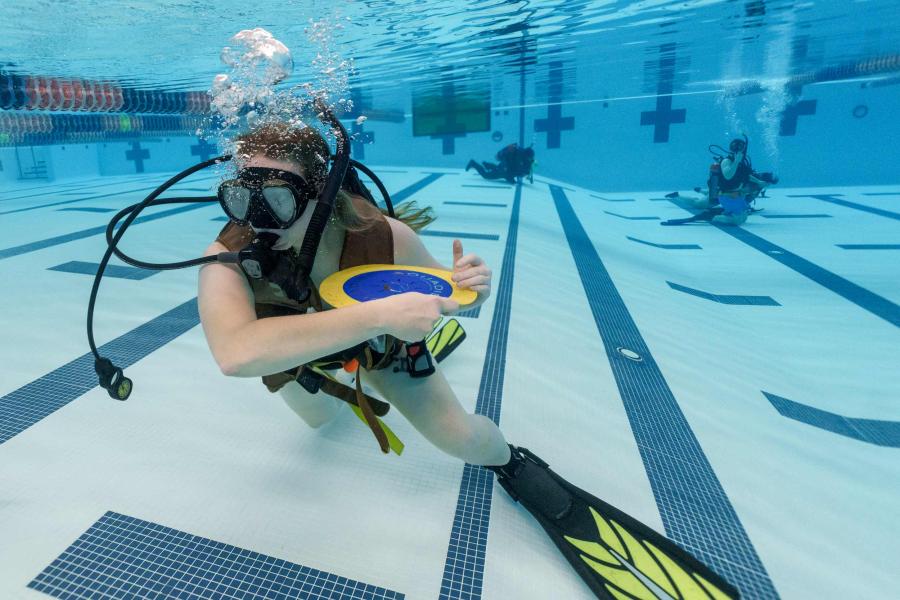“The Hereford Garden is a community effort,” program coordinator Tommy Ferrier said. “We have our dedicated master gardener coordinating student volunteers and paid garden interns and even the rest of our professional staff all chipping in to help the garden grow.”
Gardening is woven into a one-credit course, The Garden Party, available to Hereford residents in the fall and spring semesters. Students in the course, usually three to five at a time in a workshop, learn basic houseplant care, beginning vegetable gardening, reading the soil, tree pruning and vermicomposting (composting with worms). Aside from growing, the students also try preserving.
“Within the Garden Party class, as a separate workshop, we have processed popcorn, made elderberry syrup and bouquets/tussie mussies (bouquets of herbs and flowers) and braided garlic,” Maggiore said. “Herbs are easy to dry. We’ve also saved many of our own seeds.”
The Hereford Residential Garden contains vegetables – such as tomatoes, garlic, onions, peppers, eggplants and potatoes – as well as a mini-orchard with plums, apples, blueberries, pawpaws and an elderberry grove. The gardens also contain ornamental beds and a “pollinator bed” filled with native flowers and perennial shrubs that support beneficial insects, such as bees, wasps and flies.
“Our latest addition was a brand-new greenhouse which we are excited to use for seed-starting and overwintering cold-sensitive plants,” Ferrier said.
